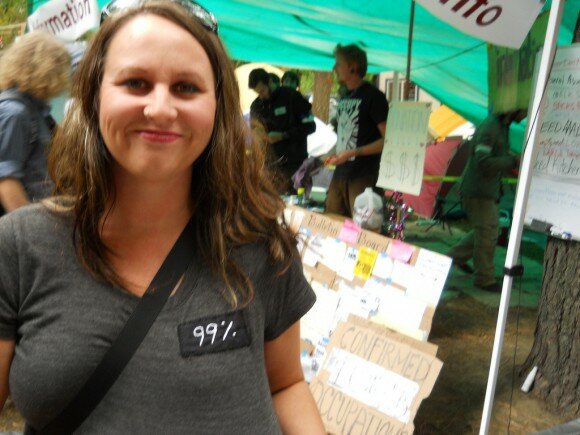
This week we’ve been looking at the different tools and tech being used by the local affiliate of the Occupy Together or Occupy Wall Street movement, also known as “We are the 99%.” Steve and Josh wrote about their experience at the protest, Josh investigating the opportunity posed by livestreaming, while Steve took some time to talk to some of the local media makers themselves.
I didn’t make it to the event, so instead of talking about experience at the protest last week, I’d like to discuss what can be gleaned from reviewing the media made by members of the occupy movement, and how Occupy Together might improve their impact by improving their media.
The bulk of Occupy Together media has focused on livestreaming. There are a few obvious reasons for this, its immediacy and ease due to readily available connectivity across a multitude of smartphones being perhaps the most obvious. I learned another reason today during a conversation with a friend and longtime media activist who has been heavily involved with the streaming and mobile broadcast efforts.
Because events are being broadcast in realtime by the participants, individuals with an interest in the continuance of their message, as well as the safety of the camp, livestreaming provides a potential deterrent to camp eviction. Police departments across the country are having to think twice about removing Occupy camps by force, a deterrent not historically available to disenfranchised groups occupying public space illegally, such as Portland’s homeless community.
Its clear how such a technique could be far more effective than previous attempts to monitor police violence at protests with offline cameras, that have media which must be copied and published at a later time. Now that individuals previously involved with the transitory summit-hopping actions of the global justice movement are partnering with newcomers to activism, its important to rethink the use of media as well as the effectiveness of other tactics.
While occupying physical space, and building a local power base provides a feeling of continuity and a space to begin organizing for change, its important to recognize he impact such a new organization has on existing issues. Occupy media has primarily focused so far on the actual Occupy events themselves, even things such as the We are the 99 Percent tumblr are activities focused in self-selection, individuals are choosing to participate.
Because of this dynamic, and the general focus of the mainstream media, Occupy is in danger of becoming more of a spectacle and a headline grabber, in the way the Tea Party has become. In order to create real, durable change, Occupiers need to tell the country and the international community what the media aren’t. They need to document the images of the real life 99%.
What if, in combination with documenting the events of the Occupy Portland encampment, some individuals took it upon themselves to start documenting the real and present issues of the 99% around Portland? This is whats necessary to provide context for the Occupy movement. Stories of today at the encampment provide a look at who the Occupiers are, and how the State is relating to them. However, it will take pointing the cameras outward, stepping out of protest comfort zones, and making an effort to explore the stories that are not yet being told if we want to know who the 99% really are.
//Photo via Streetcar Press’ Photostream
[…] Cameras don’t create context, people do – Small World News Network (US) […]
Really solid background and advice…perhaps it’s time for a few SWN US Bureaus. 😉